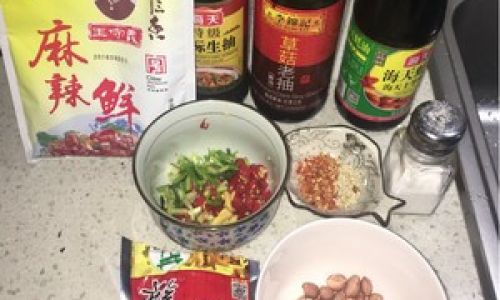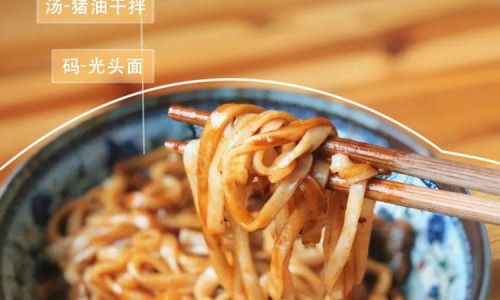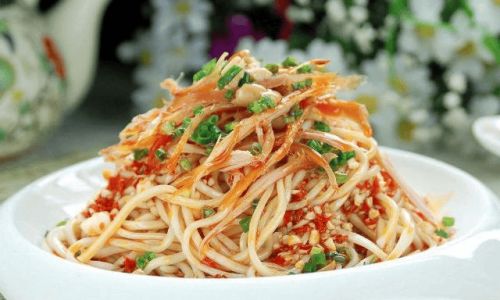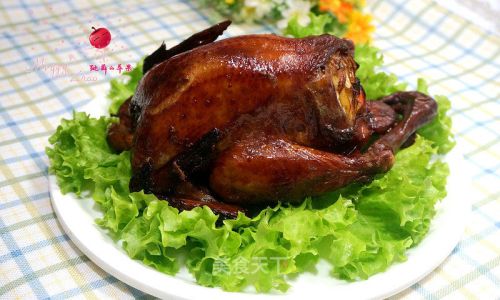Introduction

In the vast culinary landscape of global food, seasoned noodles occupy a unique and beloved niche. From the fiery spice of Sichuan dan dan noodles to the tangy tang of Vietnamese bun cha, the versatility and appeal of seasoned noodles are boundless. Whether enjoyed as a quick snack, a hearty meal, or a comforting late-night treat, the key to crafting truly delicious seasoned noodles lies in the art of making the perfect sauce or dressing. This comprehensive guide aims to demystify the process and empower you with the knowledge and skills necessary to create mouthwatering seasoned noodles at home.
Understanding the Basics
Before diving into the intricacies of seasoning noodles, it’s crucial to grasp the foundational elements that contribute to their taste. Seasoned noodles typically consist of three main components: the noodles themselves, the toppings or garnishes, and the sauce or dressing. Each of these components plays a vital role in the final dish.
The Noodles
The type of noodle you choose will significantly impact the texture and flavor profile of your seasoned noodles. Common varieties include wheat noodles (such as soba and udon), rice noodles (popular in Southeast Asian cuisine), and various types of pasta. The cooking method also matters; overcooked noodles can become mushy, while undercooked ones may retain an unpleasant chewiness.

- Wheat Noodles: These are versatile and can be found in various thicknesses and shapes. They tend to absorb flavors well, making them ideal for hearty, sauce-laden dishes.
- Rice Noodles: Lighter and gluten-free, rice noodles are often used in dishes with lighter, more delicate flavors. They require careful cooking to avoid stickiness.
- Pasta: While traditionally Italian, pasta can be adapted to many seasoning styles. Its firm texture stands up well to robust sauces.
Toppings and Garnishes
Toppings and garnishes add layers of flavor, texture, and visual appeal to your noodles. Common choices include:
- Proteins: Grilled chicken, beef, pork, shrimp, tofu, or tempeh can serve as the main event.
- Vegetables: Fresh or pickled, vegetables like cucumbers, bell peppers, carrots, radishes, and scallions add crunch and color.
- Eggs: Soft-boiled, scrambled, or fried, eggs can enrich the dish with creaminess and additional protein.
- Herbs and Spices: Fresh cilantro, basil, mint, and parsley, along with spices like chili flakes, sesame seeds, and five-spice powder, elevate the dish’s aroma and complexity.
The Sauce or Dressing
The sauce is the soul of seasoned noodles. It should complement the noodles and toppings while adding depth and balance. A well-crafted sauce can transform simple ingredients into a culinary masterpiece.
- Base Ingredients: Common bases include soy sauce, tahini, peanut butter, sesame oil, rice vinegar, and chili oil.
- Aromatics: Garlic, ginger, and shallots add a savory, aromatic backbone.
- Sweeteners: Honey, maple syrup, or a touch of sugar can help balance heat and acidity.
- Acidity: Vinegar, lemon juice, or lime juice brightens the flavors and cuts through richness.
- Consistency: Whether thin like a vinaigrette or thick like a peanut sauce, the consistency should coat the noodles evenly without being too heavy.
Step-by-Step Guide to Making Delicious Seasoned Noodles

Now, let’s dive into the practical steps of making delicious seasoned noodles. This guide will focus on a versatile, adaptable recipe that you can customize to your taste preferences.
Step 1: Prepare the Noodles
- Choose Your Noodles: Decide on the type of noodle you want to use based on your preferred texture and flavor profile.
- Cook the Noodles: Follow the package instructions for cooking the noodles al dente. Once cooked, drain and rinse them under cold water to stop the cooking process and prevent sticking. Set aside.
Step 2: Prepare the Sauce
-
Gather Ingredients: For a basic, adaptable sauce, you’ll need:
- 3 tablespoons soy sauce or tamari (for gluten-free)
- 1 tablespoon rice vinegar or lemon juice
- 1 tablespoon toasted sesame oil
- 1 teaspoon honey or maple syrup
- 1 clove garlic, minced
- 1 teaspoon grated fresh ginger
- 1-2 teaspoons chili oil or chili flakes (adjust to taste)
- 2 tablespoons peanut butter or tahini (optional, for creaminess)
- Water or broth to thin, if needed
-
Mix the Sauce: In a small bowl or jar, whisk together all the sauce ingredients until smooth and well combined. If the sauce is too thick, add a little water or broth until it reaches your desired consistency. Taste and adjust seasoning as needed.

Step 3: Prepare the Toppings and Garnishes
- Protein: Grill, sear, or poach your chosen protein until cooked through. Slice or shred as desired.
- Vegetables: Wash and chop your vegetables. Blanch or sauté them lightly to retain crispness.
- Herbs and Spices: Prepare your fresh herbs by chopping them finely. Toast sesame seeds lightly in a dry pan until fragrant.
Step 4: Assemble the Noodles
- Combine Noodles and Sauce: In a large mixing bowl, toss the cooked noodles with enough sauce to coat evenly. You may not need all the sauce, depending on your preference for how saucy you like your noodles.
- Add Toppings: Arrange the noodles on a serving plate or in bowls. Top with your prepared protein, vegetables, and any additional garnishes.
- Finish with Herbs and Spices: Sprinkle with fresh herbs, toasted sesame seeds, and any additional spices like chili flakes or a squeeze of lime juice.
Step 5: Serve and Enjoy
Your seasoned noodles are now ready to enjoy! Serve immediately while the ingredients are fresh and vibrant. Pair with a side of pickled vegetables, a simple green salad, or a refreshing drink to complement the flavors.
Customizing Your Seasoned Noodles

The beauty of seasoned noodles lies in their adaptability. Here are some ideas for customizing your dish:
- Asian Fusion: Add a splash of fish sauce and a handful of chopped cilantro for a Vietnamese-inspired flavor.
- Mediterranean Twist: Swap soy sauce for olive oil and lemon juice, and top with feta cheese, olives, and cherry tomatoes.
- Mexican Street Style: Incorporate chili powder, cumin, and a squeeze of lime. Add chopped avocado, cilantro, and a dollop of sour cream.
- Italian Accent: Use pasta and a tomato-based sauce with basil, Parmesan cheese, and a drizzle of olive oil.
- Vegan Delight: Use vegetable broth in your sauce, top with roasted tofu, tempeh, and a variety of seasonal vegetables.
Conclusion
Making delicious seasoned noodles is an art that combines precision, creativity, and a love for food. By mastering the basics and embracing the potential for customization, you can transform simple ingredients into a meal that satisfies both the palate and the soul. Whether you’re cooking for one or feeding a crowd, seasoned noodles offer a versatile, delicious, and satisfying option that’s sure to please. Happy cooking!
This guide has provided a comprehensive overview of how to make delicious seasoned noodles, from understanding the foundational elements to step-by-step instructions and customization tips. With this knowledge, you’re well-equipped to embark on your culinary journey, creating dishes that delight your taste buds and nourish your body. Enjoy the process and the delicious results!






0 comments